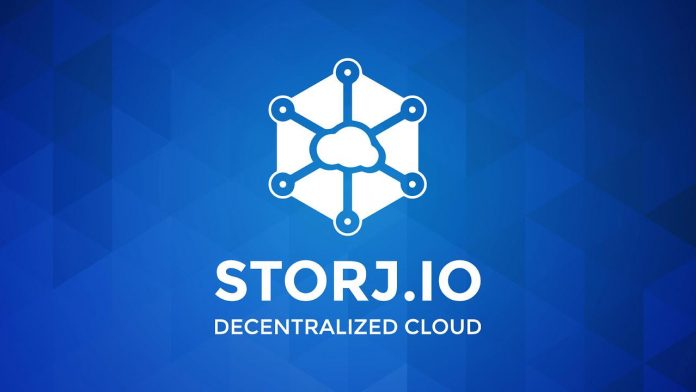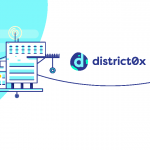Storj is the first decentralized, end-to-end encrypted cloud storage that integrates Blockchain technology and cryptography to allow for higher security of data.
Storj was founded by Shawn Wilkinson (CTO and CEO), Tome Boshevski (Chief Design Officer), James Prestwich (COO and CFO), and John Quinn (Chief Development Officer). It started as a platform to allow for crowdsourced P2P data storage. By decentralizing the data storage, Storj team was aiming at building a service similar to existing, but faster, cheaper, and more secure.
Storj, by the way, is pronounced like “storage”.
Uber for data storage
Developers are diving into exploring ways to allow sharing of computing power, hard drive space and bandwidth, it is interesting to watch this trend developing further. While we might still be a few years away from seeing supercomputers working, distributed storage is already here.
Faster, less expensive storage
The Storj team is aiming at building a service that is 10 times faster and 50 percent less expensive than traditional cloud storage solutions. It can be achieved by taking advantage of parallel downloads. Rather than getting the entire file through a single download, Storj takes a more Bittorrent-like approach. Shards of the file come in from different farmers all at once, as fast as you can download them, and the file is rebuilt on the fly. If you get 10 people delivering you shards at once, they can upload faster than you can download.
Therefore users get faster service, however, sometimes slow famers can be a bottleneck. Over time Storj has learned how to identify slow farmers and optimize shared distribution to ensure everybody gets the speed they want. For that Storj has hired a full-time data scientist who is working on this problem and is planning to add few more people to the team in the nearest future.
How does the Storj storage actually work?
The company is a cloud service provider that doesn’t operate a single datacenter. Storj is a peer-to-peer network consisting of farmers and renters. Farmers are users who rent out their spare hard drive space and bandwidth, while renters are those who purchase space and bandwidth.
Each farmer is holding but a small, scrambled piece of your file or document, and they can’t unscramble it without the proper encryption keys. By hiding in the wild on the network, storj makes it more difficult for hackers because they can not identify attack surfaces and vectors. Not only would the hackers need to hack your encryption keys to decrypt your file, but they would also need to hack the pointers to find out where those files are located on the thousands of nodes on our network.
Unlike some public blockchain models, there’s no consensus method in Storj. There doesn’t need to be one universal state of the network. If you are uploading cat pictures to the network, the only thing you really care about is farmers holding those cat pictures. It’s important to you that they’re holding them, and through a cryptographic audit storj makes sure those are being held. But, the entire network doesn’t need to know that your cat pictures are okay. The consensus mechanism creates a lot of overhead, and a lack of performance.
Every hour, Storj completes an audit and asks its farmer-nodes to solve a cryptographic challenge. If they have modified or deleted their encrypted shards, they won’t be able to answer the question correctly. These nodes that can answer the cryptographic challenge will have their contracts terminated and their Storj reputation tarnished. If the nodes answer the question correctly, then that means that they are holding their shards and they therefore get a micropayment for their contributions to the network. And that can be for one just hour’s worth of work.
Storjcoin X
Beginning on Friday, July 18, 2014 at 8:00 AM (EST), Storj began releasing Storjcoin X (SJCX). This token serves as a means of exchange for cloud storage space and bandwidth across the Storj network. Users obtain SJCX by renting out their resources to the network via DriveMiner and they are able to rent space from other users using Metadisk.
Total supply: 500,000,000 coins
Protocol: Issued on top of Counterparty (XCP)
Wallet
Since Storjcoin X is implemented on Counterparty, a compatible wallet is required such as CounterWallet.
Allocation
The coins were created in advance in order to satisfy the demand of crowdsale participants. Any additional coins not sold in the crowdsale were allocated to the developer pool, to be distributed to crowdsale participants through hard driving mining (also known as farming) or use in future crowdsales (decentralized Youtube, Imgur, etc. on Storj). Developers wouldn’t use these coins to dump for financial gain.
Crowdfunding Sales - 70%
Community Pool - 15%
Developer Pool - 15%
Community Pool
Storj believes that that the devs should not rule the coin. After all, that’s not decentralization, is it? They are trying something completely new by issuing a community pool equal to the developer pool. Any BTC in the community pool will be managed with Bitpay’s multi-signature Copay wallet.
Funds are managed by trusted community members who listen to and act upon community proposals. This is the first coin that allows the community to have equal power to the developers.
Mining
Users don’t “mine” the coins in a traditional way. Instead, they are compensated for providing their unused resources to the network via DriveMiner. This process is simplified within the application.

Storj
Storj migrated its tokens to the Ethereum ERC20 standard (it was previously on the Counterparty protocol on the Bitcoin blockchain). Storj did this to reduce transaction fees for the Storj community while also increasing the functionality and usability of STORJ.
Storj is calling its tokens, appropriately enough, STORJ. They’re digital tokens based on the Ethereum platform. You can exchange the tokens for cloud-based storage space within the Storj ecosystem. The company’s goal is to provide a cloud storage solution that’s faster and 50% less expensive than traditional datacenter-based cloud storage companies.
Typically, cloud storage providers don’t launch token systems. So why did Storj do it? Storj chose the token sale model because of its ability to support distributed applications and open source development teams. Thanks to the Storj token sale, the company can accelerate product development while promoting developer adoption and network growth.
In layman’s terms, Storj went with the token system as a type of crowdfunding. Just like companies launch on Kickstarter or Indiegogo for funding, Storj wants to do the same with their cloud storage. However, Storj’s tokens will be used as more than just a source of funding: they play a crucial role in how users interact with Storj.
Token wallets
• MyEtherWallet is fine to use for storing STORJ tokens
• Parity
Token exchnages
Poloniex, Bittrex and ShapeShift confirmed, that they want to list the STORJ (ETH ERC20 token), but there is no ETA from them.
[currencyprice currency1=”storj” currency2=”usd,eur,btc”]
[currencygraph currency1=”storj” currency2=”usd”]
























